Valley Forge
Last month while I was travelling for work, I wound up with a few hours to kill before I needed to be at the Philadelphia airport, and I realized that Valley Forge was just off my route from Point A to Point B. It was an irresistible chance to walk on ground imbued with history. I'm not a serious history buff, but it's a subject I enjoy delving into, and being able to see part of the crucible that melted and forged the army that fought so valiantly for my freedom was an opportunity I couldn't pass up. Readers of my fiction and non-fiction alike most likely realize that I am proud to be an American, and that pride is in no small part because of the unprecedented individual liberties my citizenship entails me with.
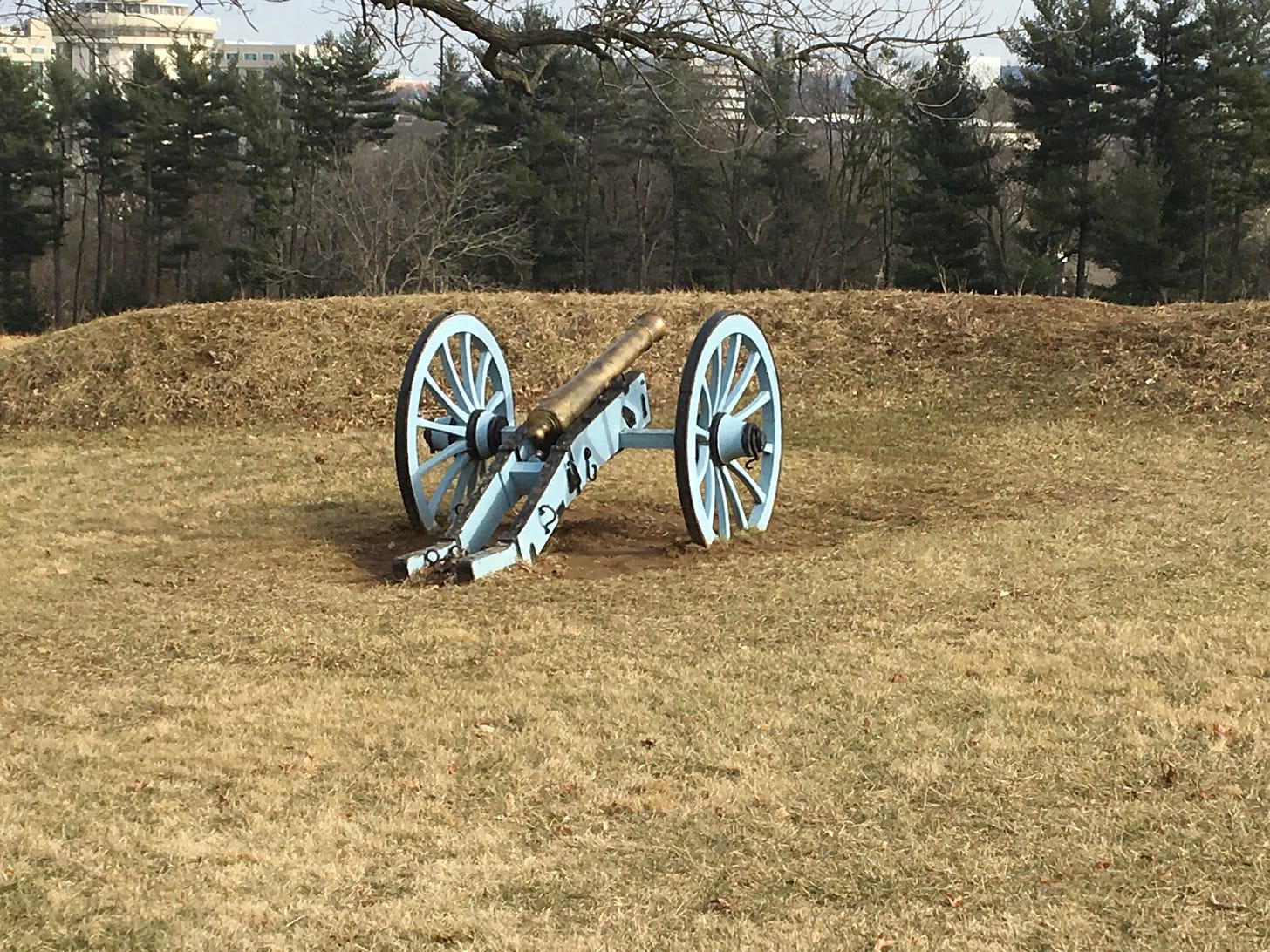
The park that memorializes the encampment is not in the valley, but stretches along a low, long ridge above the valley, which makes much more sense for a fortification than putting it down where sightlines are shorter. The modern view is of a huge casino and the city around it, but the park is, at least on a February afternoon, a peaceful expanse of grass with scattered trees, monuments, cannons, and replicas of the cabins.
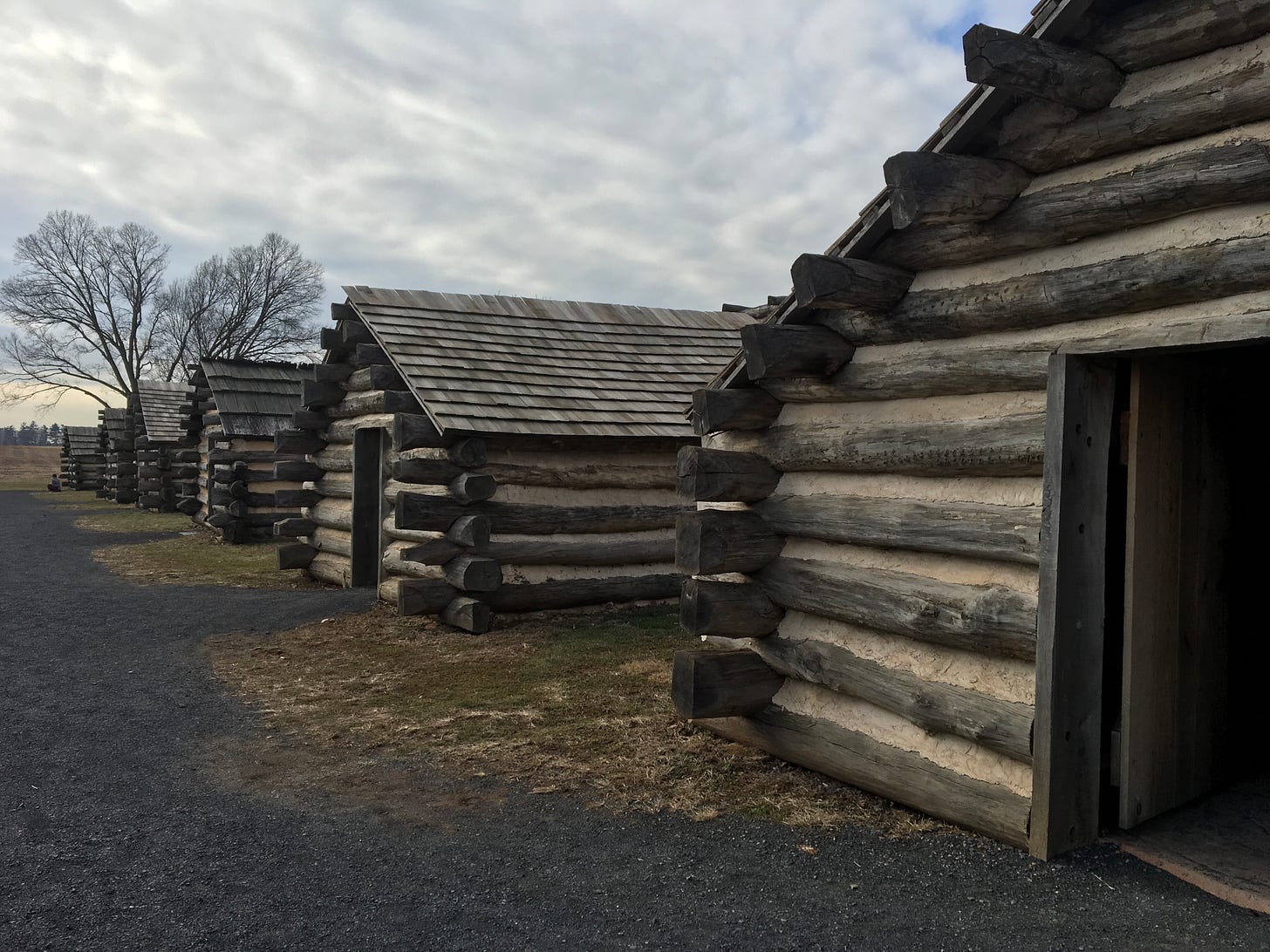
The small dwelling places represent where the men would have huddled for warmth through cold nights. On my visit it was positively balmy, perhaps fifty, with a brisk breeze.
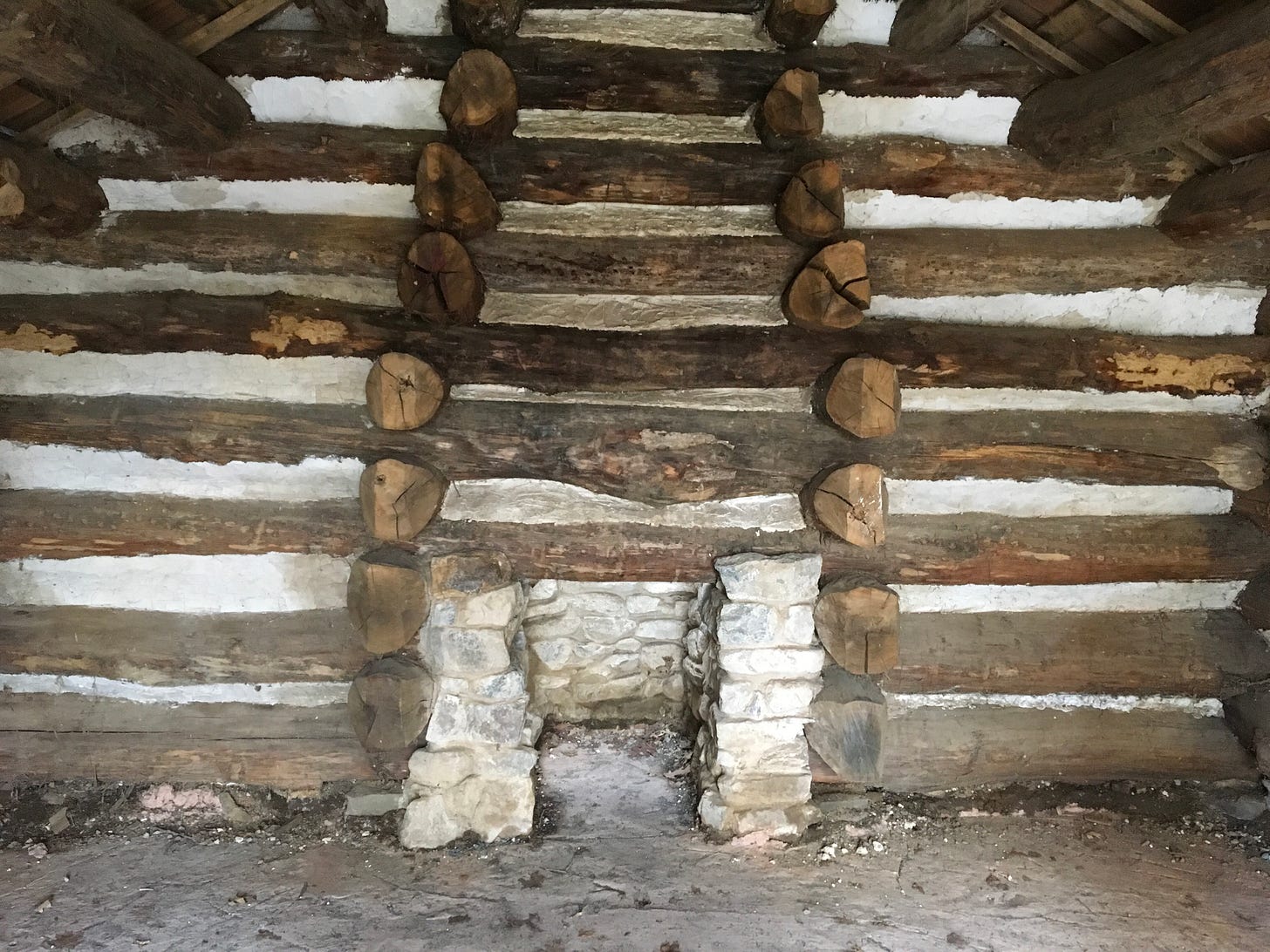
Clearing the encampment would have built the cabins from logs, and provided firewood... for a time. After that?
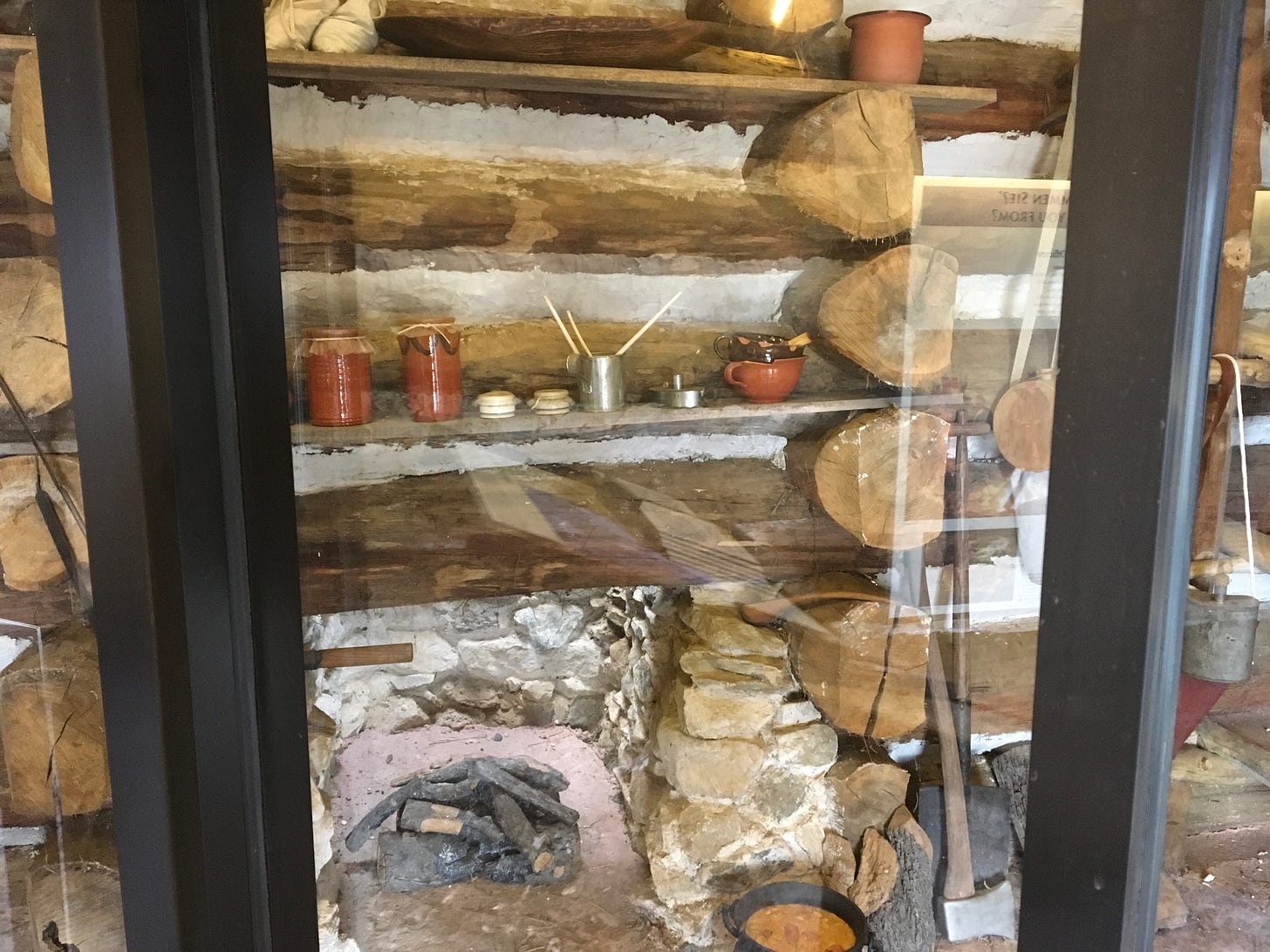
Some of the cabins held artifacts behind glass, to bring the life back into this historic place. We might think of it in terms from our childhood history texts, the noble General Washington bundled against the cold astride his horse... but the men cooked, cleaned, chopped wood, and endured the cold unpictured.
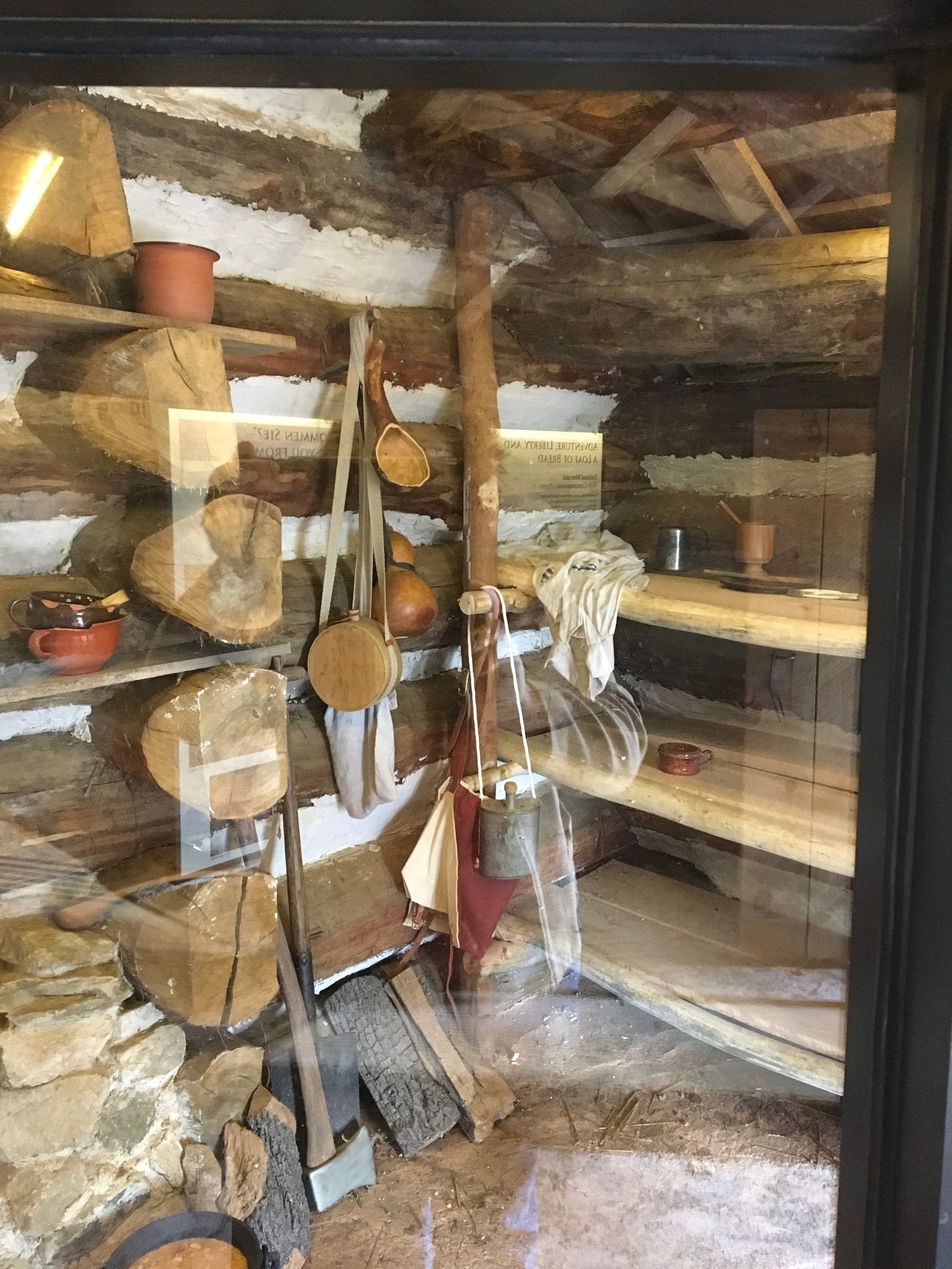
Much of the gear was probably made by the men themselves. These were not wealthy men, by any means, and whatever they did own, they had forfeit by their rebellion.
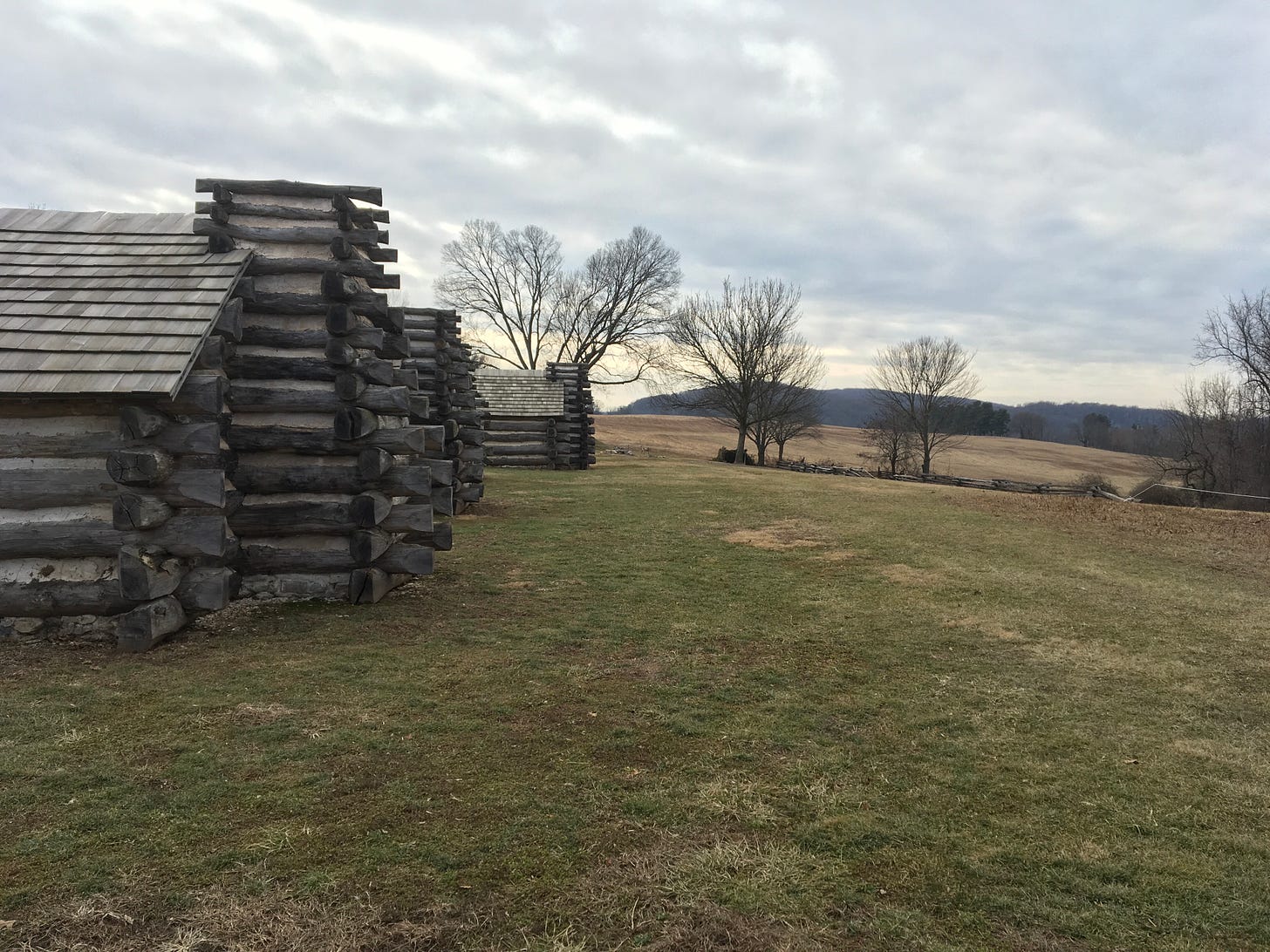
It's hard to get a sense of just how large the encampment was, but I can tell you that the 'driving tour' which I didn't completely follow, was ten miles long.
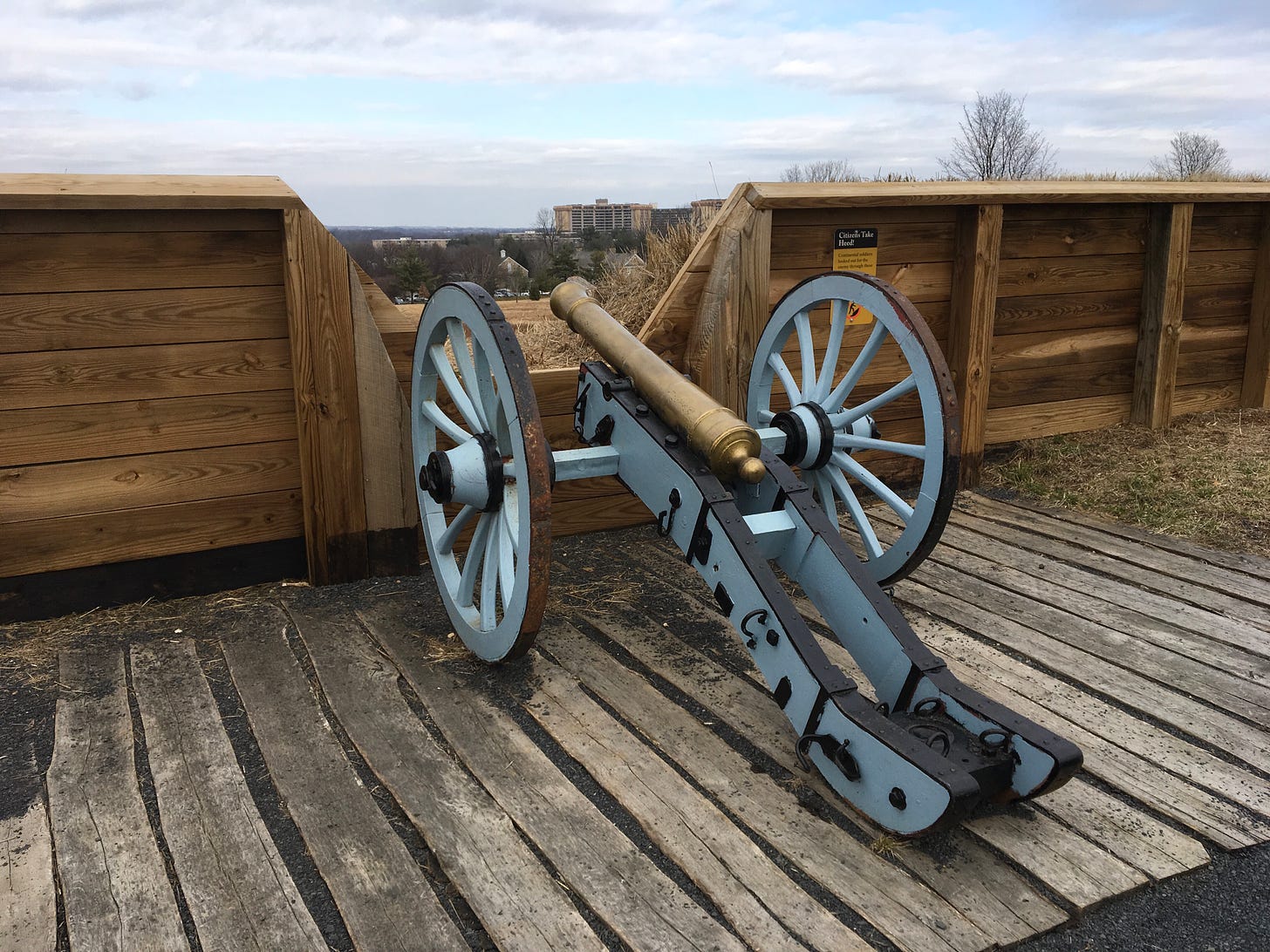
One of several cannon in a restored earthen fort, now overlooking the valley itself. In the center, a bunker looked like a mound of dirt with a small door on the side, meant to be a safe space from incoming artillery fire.
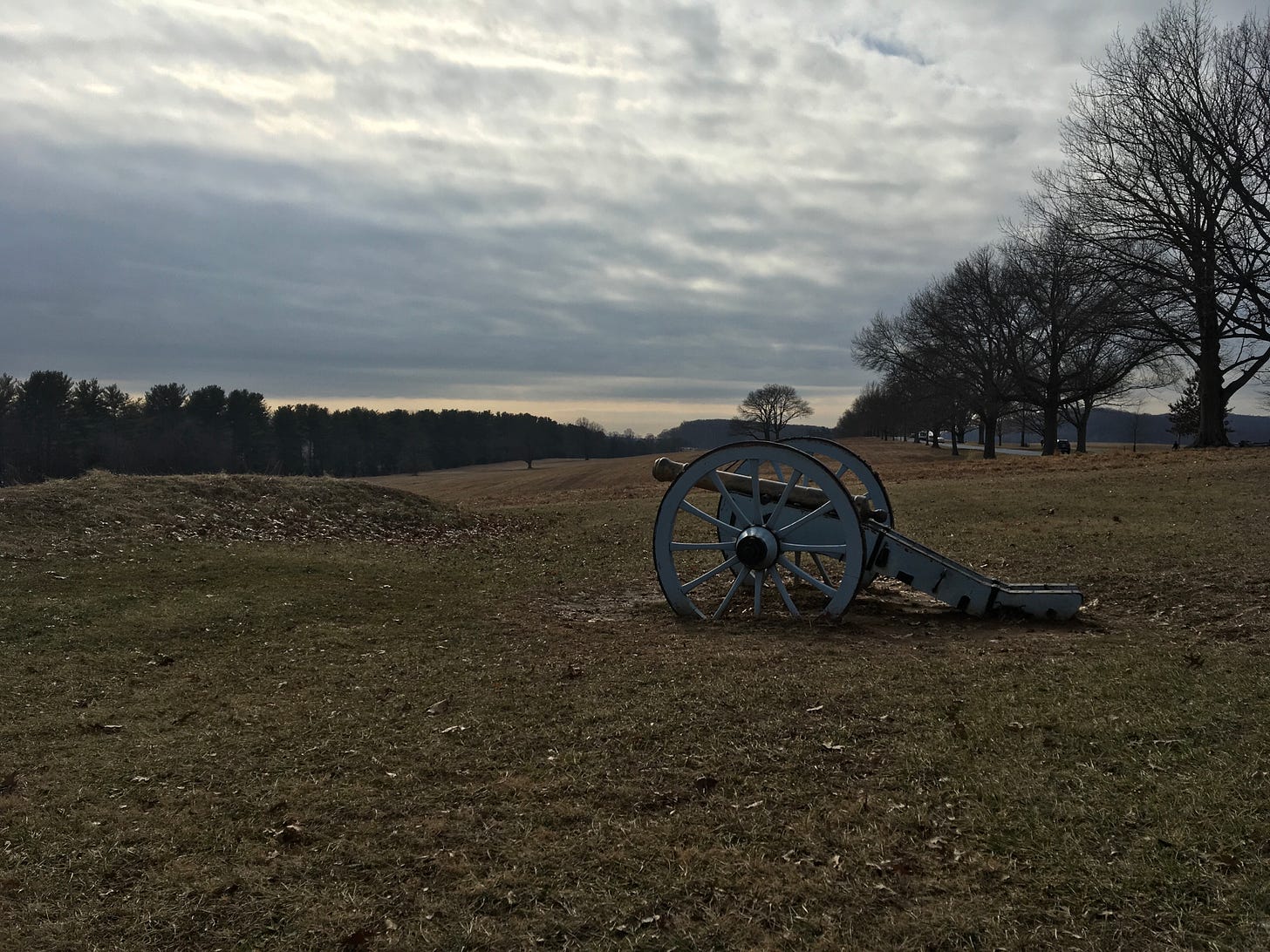
The darkest hour of the American Revolution played out along this stretch of ground. Now, it's a place to remember the brave men who gave everything up in an attempt to win freedoms unthinkable to the rest of the world. Freedoms that are still alien to much of our modern nations. If you ever get the chance, take the time to visit the Valley and shiver in the wind, remembering the patriots who bled for your ability to live like you do. Without those freezing, pitiful soldiers, our country would be a very different place.




